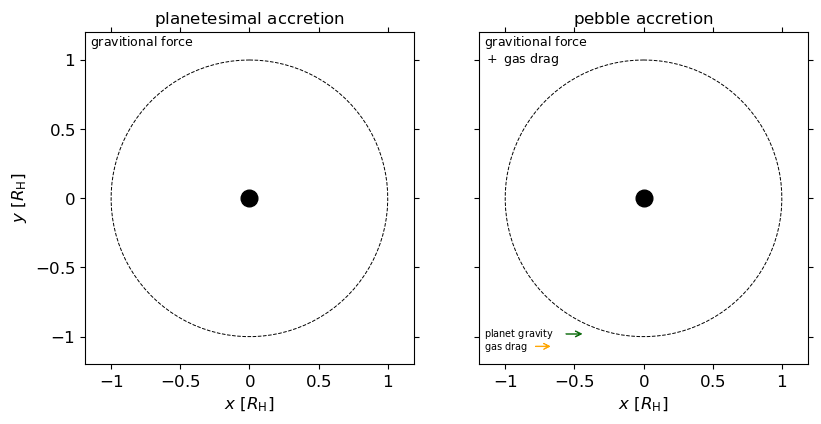This is an invited review article published in Research Astronomy and Astrophysics, written together with Prof. Ji Jianghui at Purple Mountain Observatory. We provide a comprehensive panoptic view of modern core accretion planet formation scenarios, which includes dust growth and radial drift, planetesimal formation by the streaming instability, core growth by planetesimal accretion and pebble accretion. We also list the outstanding questions and future directions of future planet formation studies. See details for Liu & Ji 2020, RAA [ADS] [arxiv].

Fig.1: flow chart of planet formation with bodies of different sizes.
For instance, we illustrate in Figure 1 the planetary bodies with different characteristic size. These are micro-sized dust grains, mm/cm sized pebbles, >10km sized planetesimals, >1000 km sized protoplanets and final planets (terrestrial/super-Earth planets or gas giant planets). The key growth processes that each body increases its size are marked in red text. These planetary bodies also interact with the protoplanetary disk gas, causing their orbits to shrink or expand. Such solid-gas interaction is different among different size bodies. For example, the aerodynamical gas drag dominates for smaller size dust grains and pebbles, while the gravitational tidal torque matters for larger size planetesimals and planets.
Figure 2 provides an animation of planetesimal-planet (left) and pebble-planet encounters in a planet-centered co-moving frame. Planetesimals are >10 km bodies and pebbles refer to cm to mm size solid particles. Noticeably, how they get accreted by the planet behave differently. Only the gravitational force matters when the planetesimal interacts with the planet, while the gravitational force and gas drag force jointly contribute when the pebble interaction with the planet. The key difference between these two accretion modes is whether the gas drag plays a significant role during accretion.

Fig.2: planetesimal accretion vs pebble accretion.